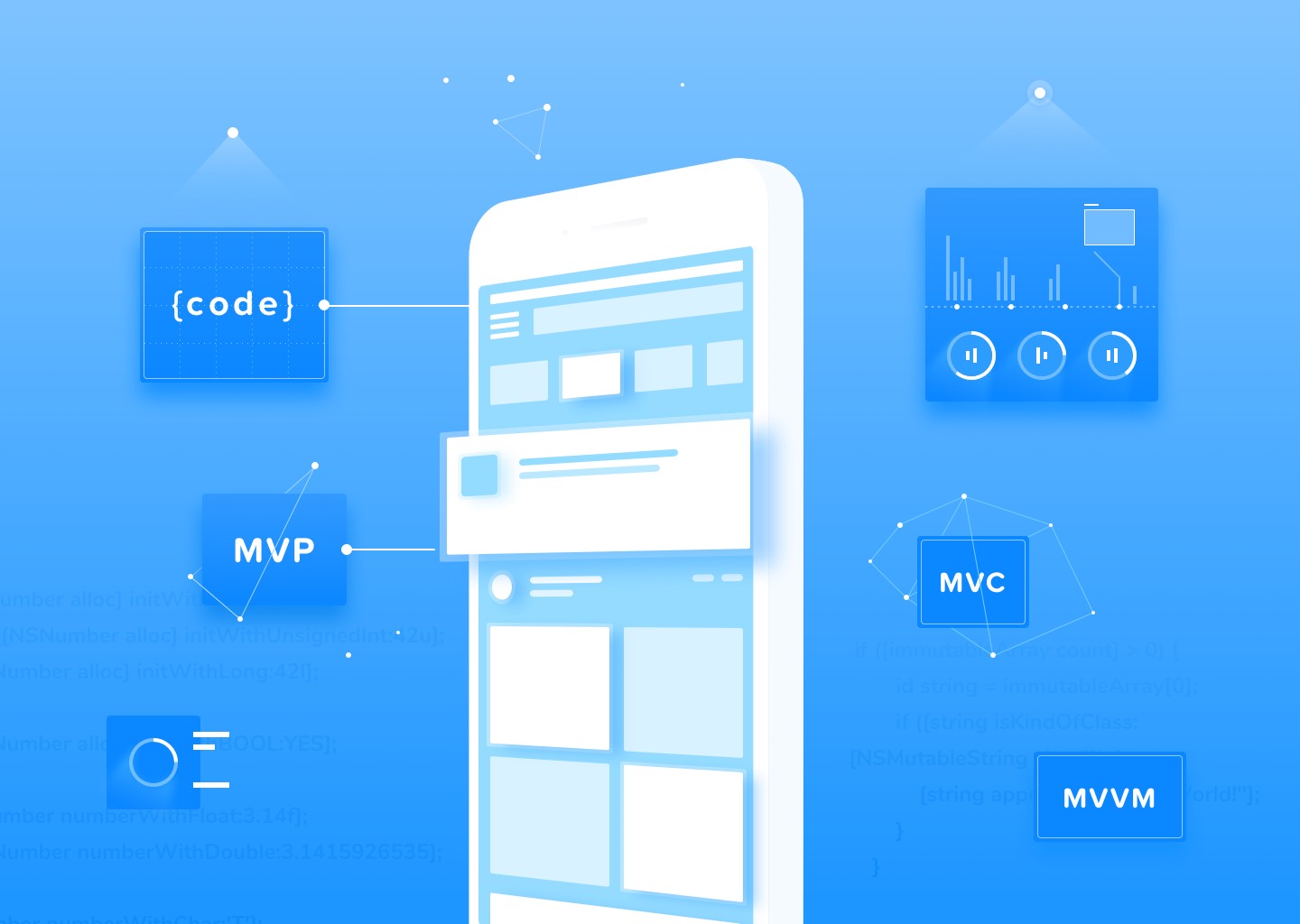I. Introduction: The Evolution of App Architecture
In the tapestry of technological marvels, MVVM isn’t just a pattern; it’s a magician’s wand, conjuring up apps that work harmoniously, irrespective of the challenges they face. Think of a weather app that updates you on the go, even when your connection falters, or a navigation tool that recalculates your route in real time, ensuring you never miss a turn. These are not just apps; they are experiences, made possible by the elegance of MVVM.
As we embark on this journey, prepare to witness the real-world enchantment of MVVM—a pattern that empowers applications to function autonomously, adapt to diverse environments, and deliver seamless user experiences. Fasten your seatbelts, for you are about to discover the untold stories of how MVVM is transforming the way we interact with technology, one magical use case at a time.
II. Demystifying MVVM: A Technical Odyssey
MVVM’s core strength lies in its ability to decouple the user interface (View) from the business logic (ViewModel) and the data (Model), fostering a trifecta of modularity. By compartmentalizing these components, MVVM offers a framework that is not just scalable but also highly adaptable to the evolving demands of modern applications.
Real-Life Example: E-Commerce Personalization
Consider a cutting-edge e-commerce platform that tailors user experiences based on purchase history and preferences. The View displays product listings and user interfaces. The ViewModel interprets user interactions and orchestrates requests, while the Model fetches and processes personalized data. MVVM ensures that even as user interfaces and personalization algorithms evolve, each component remains insulated and independently testable.
III. Synergy with Reactive Programming: The Art of Real-Time Responsiveness
MVVM truly shines when coupled with reactive programming paradigms. Reactive frameworks like RxJava, RxSwift, or RxJS, integrated seamlessly with MVVM, transform applications into responsive, event-driven powerhouses. This integration ensures real-time data binding, where changes in data are instantly reflected in the UI, captivating users with fluid and interactive interfaces.
Best Practice: Swift UI in iOS App Development
In iOS development, Swift UI combined with MVVM heralds a new era of user-centric apps. Swift UI’s declarative syntax and reactive nature align seamlessly with MVVM. By binding UI components directly to ViewModel properties, developers can create interfaces that respond in real time to underlying data changes, enhancing user engagement and satisfaction.
struct ProductView: View {
@ObservedObject var viewModel: ProductViewModel
var body: some View {
VStack {
Text(viewModel.productName)
Text(viewModel.productDescription)
}
}
}
IV. MVVM in Real-Life Scenarios: A Revolution Unfolding
Case Study: Enterprise Resource Planning (ERP) Systems
In large enterprises, where seamless data management is paramount, MVVM plays a pivotal role. ERP systems, handling everything from inventory management to human resources, rely on MVVM’s modular approach. Each module, encapsulated within a ViewModel, communicates with the central data layer. This setup allows enterprises to customize, scale, and upgrade individual modules without disrupting the entire system.
Case Study: Digital Health Platforms
Amidst the global digital health revolution, MVVM empowers platforms that bridge the gap between patients and healthcare providers. Patient data, stored in secure databases (Model), is processed and analyzed by sophisticated algorithms (ViewModel). The interpreted results are then presented through intuitive interfaces (View). MVVM’s clear separation of concerns ensures data security, modifiability, and swift adaptation to emerging healthcare standards.
V. Challenges and Triumphs: Navigating the MVVM Ecosystem
While MVVM is a powerful tool, its improper usage can lead to pitfalls that hinder the development process. Here, we identify common challenges and provide solutions to ensure you navigate the MVVM landscape effectively.
Challenge 1: Overcomplicated ViewModels
ViewModels should not become the dumping grounds for all application logic. Overloading them with responsibilities can lead to convoluted code. Instead, aim for simplicity, adhering to the Single Responsibility Principle.
Challenge 2: Balancing Reactivity and Performance
While the reactive nature of MVVM is a boon, it should not come at the cost of performance. Profiling your application to identify performance bottlenecks is essential. Tools like Xcode Instruments and Android Profiler can help identify memory leaks, excessive CPU usage, or inefficient data processing.
Challenge 3: Lack of Testing
Comprehensive unit testing of ViewModels is paramount. Libraries like JUnit and XCTest, coupled with mock frameworks, ensure that each ViewModel behaves as expected under various scenarios.
VI. Conclusion: MVVM – The Pillar of Modern App Development
In the ever-shifting sands of technology, the MVVM design pattern stands as a lighthouse, guiding businesses to unparalleled success. It’s not just about apps; it’s about crafting experiences that resonate with users, transcending the boundaries of the digital realm. As we conclude this exploration into the transformative power of MVVM, it’s time to reflect on your own journey.
Whether you need an architecture assessment to unlock hidden potentials within your current systems or desire a free discovery call to explore the boundless possibilities, we are here to assist.
Your technology should be the wind beneath your business’s wings, propelling you toward your goals. Let’s make it happen. Connect with us today and let the MVVM revolution transform your business.
Codewave is a design thinking led digital transformation company enabling organisations with playful innovation using AI & ML, IoT & Edge, AR, VR, Cloud, Blockchain, and Data.







